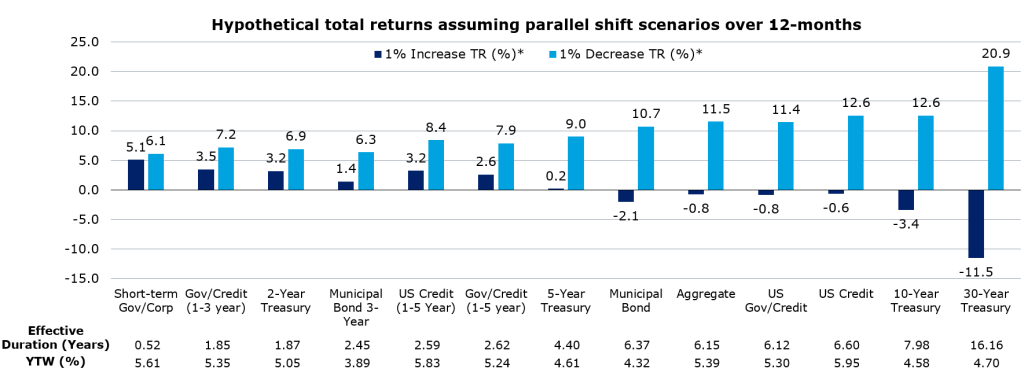Three things we learned:
- Issuers are preparing for a new normal. Nothing’s written in stone but higher for longer has already profoundly affected credit market fundamentals. Dispersion could be a central theme of 2024.
- Short-term money markets have not witnessed significant outflows… yet. Expectations are for asset growth to continue into 2024 but will be driven by institutional flows rather than retail flows. Core cash and strategic cash may start to extend duration offsetting the positive institutional flows.
- A soft landing in the US would be beneficial for EM debt. Geopolitics is an ever-present risk but, with elevated spreads versus developed markets, the asset class could offer attractive, uncorrelated returns from here.
In his presentation on the macro milestones to watch out for in the coming months, RJ Gallo, Head of Federated Hermes’ Duration Committee, discussed the wider pressures fixed income has faced since the Covid-19 pandemic amid a surge in inflation and aggressive monetary tightening by central banks.
“The long after-effects of the pandemic have created challenging conditions for fixed income investors. But the worst is now over,” he said. “The US Federal Reserve has probably finished its tightening cycle and a potential decline in consumer spending will exert further downward pressure on inflation.”
As a result, fixed income should start to behave more traditionally, with less volatility, providing a cushion to total returns. “At Federated Hermes, we are relatively optimistic that we have arrived at that destination, that now is the time to be looking to move out the curve and add fixed income back into your portfolio,” Gallo added.
Stressing rates 1% up or 1% down suggests long-term investors should not fear duration

Fundamentals will begin to bite by next year.
In the panel discussion that followed, Fraser Lundie, Head of Fixed Income, Public Markets, highlighted the prospect of a slowdown in corporate earnings momentum as the impact of higher interest rates begins to work its way through the real economy.
“Corporates are having to adjust to the new normal of rates returning to their long-term mean,” he said. “Earnings momentum will begin to roll over and balance sheets will begin to reduce. Fundamentals will begin to bite by next year. In response, you might expect companies to dial down their current shareholder-friendly approach in favour of actions more beneficial for debt holders.”
This include corporate belt-tightening in the form of reduced share buybacks and dividends coupled with lower rates of M&A, he added.
Money markets and EM debt
Deborah Cunningham, Chief Investment Office, Global Liquidity Markets, noted that with yields above 5% and low to decelerating growth expected in 2024, the macro backdrop represented “relative nirvana” for money market investors, particularly when compared with the pre-pandemic backdrop of zero-to-negative interest rates.
She noted that, although movement of AUM out of the asset class was expected as some investors extend duration, it should be offset with inflows from operating cash of institutional investors.
Ihab Salib, Senior Vice President, Head of International Fixed Income Group, focused on the positives for investors in emerging market sovereign debt. Here, he said, stable to declining rates should be viewed as a positive and a mild recession would be even more beneficial. Stable or lower core rates would relieve funding pressure on EM sovereign and corporate issuers, enabling investors to benefit from potential spread compression.
“Even so, it’s worth noting that EM debt is less correlated to interest rates than other asset classes,” he added. “Geopolitical risk is an ever present risk but what we’ve learned over time is that the market tends to over reacts whenever something significant happens. With an overall 400bps spread level when compared with developed market debt, what’s clear is that some of the opportunities out there are pretty compelling.”
For more on the thinking of our fixed income teams, read our latest 360 report.






